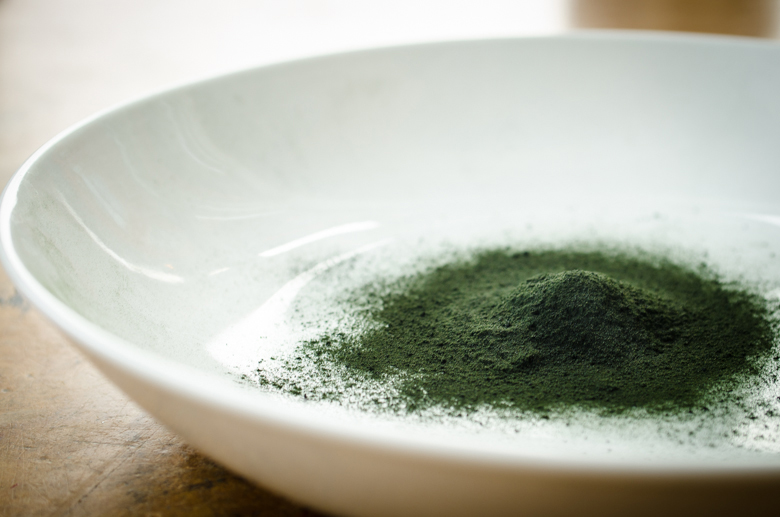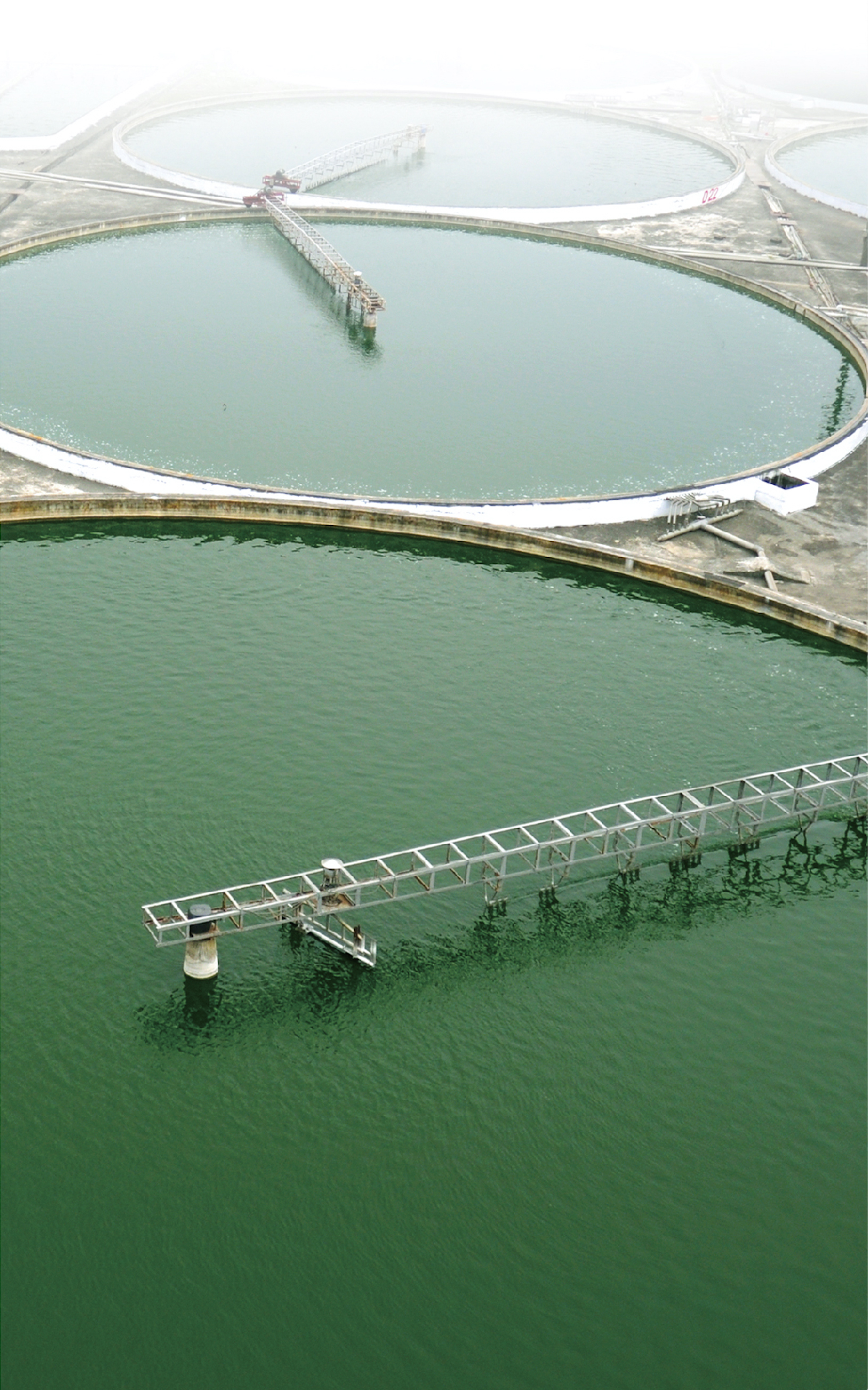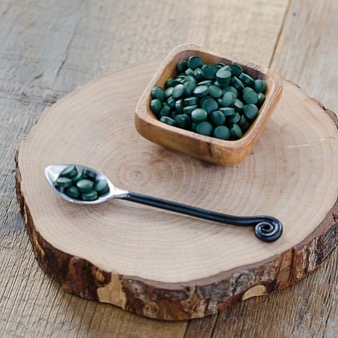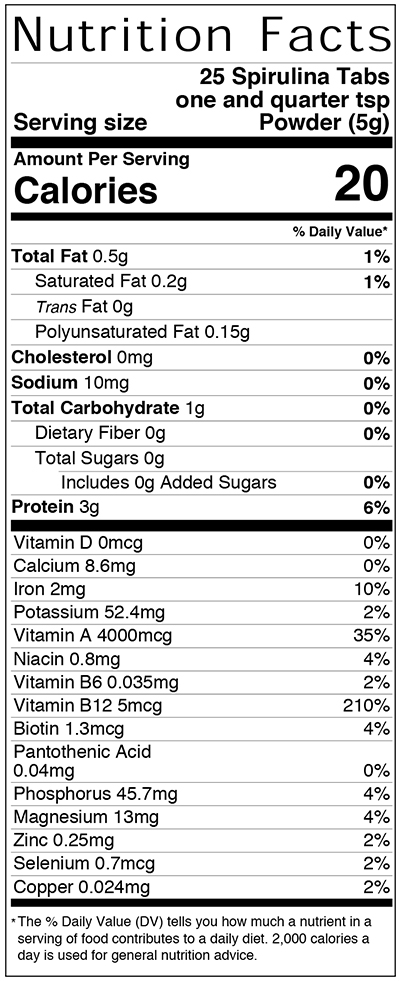If health and wellness is your thing then you’ve most likely heard that eating Spirulina is good for you. I’m here to share with you this may or may not be true.... It’s a buyer beware kind of world! Conducting your due diligence is always important, so ensure you buy spirulina from a company you trust, that you know where your food is grown and are at peace with it and ensure that you’re getting the good stuff only!

Spirulina is a type of cyanobacteria, which is a family of single-celled edible microbes that are often referred to as blue-green algae. When viewed under a microscope spirulina appears as a mass of intertwined single-celled spiral filaments, and hence the name spirulina. The superior strain of spirulina we offer is Spirulina platensis ( Arthrospira platensis). The World Health Organization (WHO) considers spirulina “a very suitable food” as it’s a plant-based source of vegetable proteins (approx. 60%), supplies the essential amino acids, vitamins (A, K1, B1, B2, B3, B6, B7, B8, B12, E), minerals, chlorophyll, enzymes, nucleic acids (RNA & DNA), microelements, a high level of carotenoids (beta carotene and xanthophylls), and a source of the Omega 6 fatty acids Linoleic Acid (an EFA) and Gamma Linolenic Acid (GLA). See detailed nutritional facts below.
In the last five years I have witnessed a large influx of cheap low-quality spirulina into the Canadian market originating from a very large Asian country. More than ever, it is essential to take time to ensure the food you’re eating, especially concentrated foods like spirulina and chlorella, are clean, pure, organic, lab tested, and originate from an area that has a track history of environmental purity, a culture and company that values high quality, integrity and building long-term business relationships. Remember, spirulina is grown in water so the quality of the water is a key component in ensuring you’re getting the best.
I thought I’d take a moment to tell you about sourcing and a few more tidbits regarding Giddy Yo spirulina. First things first, our spirulina is known to actually taste good and does NOT have a fishy taste! If not for anything else, this may be a good enough reason for you to make your go-to Giddy Yo (: But seriously, there is so much more so let’s begin…

Step One - Sourcing. Our grower has been cultivating organic spirulina (and chlorella) since 1976 and is one of the largest microalgae cultivators and suppliers in Asia. The company is at the forefront of research and development of microalgae and owns multiple patents in both Taiwan and the USA.
The cultivation facility has over 60 microalgae culture ponds and is located in beautiful county in southern Taiwan. Our premium strain spirulina and chlorella is cultivated utilizing only trace element-rich pure mountain spring water. The feed and fertilizers used for proper cultivation are plant-based and organic. The facility is located in an environmentally unpolluted area exposed to constant sunlight which is necessary for photosynthesis occurrence and dense nutrient production (e.g. phytochemicals, vitamins, minerals, amino acids etc.). Yearly average temperature is approx. 25 degrees Celsius and thus the ideal location for Spirulina and Chlorella cultivation.
Our supplier has multiple certifications such as; Organic Certification (USA, Canada, EU, etc.), Naturland, Halal, HACCP, ISO 22000 and GMP. Food purity, quality and safety remain the number one priority. In Taiwan, quality tests are conducted for microbials (yeast & mold, plate count, Ecoli, Salmonella), Microcystin, heavy metals, radiation (Iodine 131, Cesium 134 & 137), as well as for the chemical composition (protein, fat, carbohydrates, ash, moisture, chlorophyll, pheophorbides) to ensure finished product meets specifications. Giddy Yo conducts additional testing for microbials (bacteria, fungi, Ecoli, salmonella, etc.). Our spirulina and chlorella do not contain fillers, binders or chemical solvents, and are vegan, gluten-free and non-GMO.
 Unfortunately, what we’re not often made aware of is what can go wrong with spirulina and thus why it’s so important to find a reliable source. Good spirulina should not smell or tastes fishy. Spirulina will have a mild and pleasant seaweed smell and taste as it is a microalgae. If your spirulina or chlorella smells and tastes fishy, we suggest you consider sourcing elsewhere.
Unfortunately, what we’re not often made aware of is what can go wrong with spirulina and thus why it’s so important to find a reliable source. Good spirulina should not smell or tastes fishy. Spirulina will have a mild and pleasant seaweed smell and taste as it is a microalgae. If your spirulina or chlorella smells and tastes fishy, we suggest you consider sourcing elsewhere.
There is a class of toxins that can be found in some spirulina and chlorella called Microcystin. Microcystins are produced by certain freshwater cyanobacteria, plankton etc. which can infiltrate and contaminate the growing medium, so it is essential that you do not purchase your spirulina from just anyone, and especially avoid if it’s home-grown. If your spirulina is cultivated in natural lakes/rivers etc. vs. being grown in strictly controlled cultivation pools, we highly suggest you ask your supplier if they test for microcystins and view the results, and possibly source elsewhere. We test for Microcystin-LR, Microcystin-RR, Microcystin-LA and Microcystin-YR and results indicated a level of “not detected”. When ingested, microcystin are hepatotoxic (able to cause damage to the liver) and may cause nausea, vomiting, diarrhea and mild liver enzyme elevation. If you’ve ever experienced these symptoms when ingesting microalgae, we suggest you stop taking the spirulina immediately and request information from your supplier. Eating spirulina can have a detox effect in some people, so always exercise common sense caution when introducing new foods and follow suggested serving size.
As stated in the article entitledHealth aspects of Spirulina (Arthrospira) microalga food supplement by Theodore Sotiroudis and Georgios Sotiroudis, published in the
Journal of the Serbian Chemical Society, January 2013 (link provided below);
"It must be emphasized that the consumption of Spirulina of unknown origin or originating from countries that do not guarantee the quality and safety of the product should be avoided. The major areas of concern for the safeconsumption of Spirulina are microbiological load, heavy metal content, pesticides, extraneous matter and cyanobacterial toxins."
Ensuring your spirulina is of high quality and safe to consume is so very important to your health.
So how do we suggest you eat our spirulina?
- For the powder we suggest adding to water (try adding a pinch of cinnamon or lime mmm), smoothies, smoothie bowls, protein balls or bars, home-made chocolate and other raw recipes, or sprinkled over salad or eggs.
- For the tabs, you can always chew, or add to trail mix, or gulp down a small amount with water. Our suggested serving size is 2-25 tabs (or ¼ - 2 ½ tsp of powder) per day or multiple times per day.
5 tabs = 1 g. so each tab is .2 g.
For the powder, 1 ¼ tsp = 5g.
Please use common sense caution when introducing any new food into your diet and work your way up to higher amounts. Be mindful of how much you take, less is often best, especially when starting a new eating program. Store in a cool dry place out of direct sunlight and in an airtight container.In a 5g serving (25 tabs/ 1.25 tsp powder) you’re getting:
- Protein: 3g
- Iron: 2 mg 10%
- Fat:
- 50 mg - 90 mg Linoleic Acid (an essential omega-6 fatty acid)
- 50 mg - 90 mg gamma linolenic acid (aka GLA, an omega-6 fatty acid)
- Vit A (Beta Carotene) 4,000 mcg 35%
- Niacin .8 mg 4%
- VIt B6 .035 mg 2%
- Vit B12 5 mcg 210%
- Biotin 1.3mcg 4%
- Phosphorus 45.7 mg 4%
- Magnesium 13 mg 4%
- Phytonutrients:
- Chlorophyll 75mg
- Cartenoids 14 mg
- Phycocyanin 600 mg
- Zeaxanthin 3.34 mg
- Lutein .4 mg

Let us know if you've tried our spirulina and how you’ve been enjoying it. We love hearing from you!
Xox Bridgitte & Team Giddy Yo
For reference and more in-depth information please visit:
- https://www.sciencedirect.com/topics/medicine-and-dentistry/spirulina-maxima
- https://www.sciencedirect.com/topics/agricultural-and-biological-sciences/spirulina-maxima
- https://www.researchgate.net/publication/274440966_Health_aspects_of_Spirulina_Arthrospira_microalga_food_supplement
- https://www.cdc.gov/nceh/hsb/chemicals/pdfs/Facts_...
- https://iimsam.org/iimsam-spirulina-resource-centre/
- https://en.wikipedia.org/wiki/Spirulina_(dietary_supplement)


